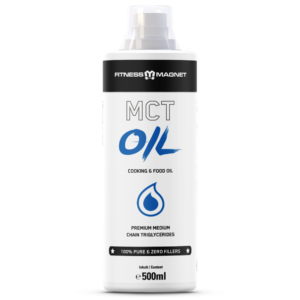Wenn in einschlägigen Online-Foren einmal wieder eine Diskussion über Rekorde im Bereich des Squattens entbrennt, kann man mit an Sicherheit grenzender Wahrscheinlichkeit davon ausgehen, dass es beinahe ausschließlich um Back Squats geht. Dies ist auch nicht weiter verwunderlich, handelt es sich doch um die Königsübung schlechthin. Wir sind die Letzten, die die Intention hegen, der guten alten Kniebeuge das Wasser abzugraben, aber dennoch sollte es nicht unerwähnt bleiben, dass Front Squats den Back Squats in einigen Punkten sogar überlegen sind. Im Angesicht dieser Tatsache darf man sich zu Recht fragen, warum Front Squats in dieser Republik nur von einem Bruchteil der Athleten praktiziert werden. Die Antwort ist einfach. Front Squats sind schlicht und ergreifend harte Arbeit weit außerhalb der eigenen Komfortzone und bei den Meisten dementsprechend ebenso beliebt wie Brusthaare oder ein Proteinshake aus rohen Eiern. Warum du die Übung dennoch in deinen Trainingsplan aufnehmen solltest? Gute Frage.
Warum sollte ich Front Squats in meinen Trainingsplan aufnehmen?
Warum diese Übung auf jeden Fall in dein Trainingsprogramm gehört ist schnell erklärt, denn sie bietet dir drei große Vorteile, sofern du sie korrekt ausführst. Der erste große Vorteil ist die Tatsache, dass sich der Range of Motion im Vergleich zu herkömmlichen Back Squats deutlich erhöht. Ursächlich ist die Verlagerung der Hantel vor die Körperachse, wodurch die Bein- und Hüftbeuger weniger unter Spannung stehen und somit weniger dazu neigen, den Bewegungsablauf zu blockieren. Darüber hinaus erfolgt durch die zusätzliche Tiefe eine höhere Aktivierung der Po-Muskulatur, sodass diese deutlich besser in den Bewegungsablauf miteinbezogen werden kann. Was zudem für die Front Squats spricht, ist die intensive Beanspruchung der Bauchmuskulatur, die im Zuge der Übungsausführung nicht nur exzellent trainiert wird, sondern ebenfalls ihren Teil dazu beiträgt, dass dein Oberkörper über den gesamten Range of Motion hinweg stabil bleibt. Letztendlich sollte auch nicht unter den Tisch fallen, dass Front Squats den Quadrizeps deutlich gezielter und auch stärker beanspruchen als konventionelle Kniebeugen. Unter dem Strich gibt es also keine bessere Übung, wenn es darum geht, die Entwicklung der vorderen Oberschenkelmuskulatur zu fokussieren.
Warum du keine richtigen Front Squats hinbekommst
Eventuell hast du es bereits einmal mit Front Squats versucht, bist aber bis dato immer daran gescheitert. Die Gründe dafür mögen mannigfaltig sein, ragen über das nur allzu gerne gepredigte Mantra »üben macht den Meister« jedoch weit hinaus. Im Folgenden möchten wir dir dementsprechend einige mögliche Ursachen aufzeigen, die womöglich auch dich daran hindern, saubere Front Squats auszuführen.
Deine Bauchmuskeln sind nicht stark genug
Der wohl häufigste Grund, warum Athleten an den Front Squats scheitern, ist eine zu schwach ausgebildete Bauchmuskulatur, was dazu führt, dass du deinen Oberkörper im Zuge der Übungsausführung nicht in ausreichendem Maße stabil halten kannst und deinen Arbeitssatz vorzeitig abbrechen musst. Bevor du dich also daran begeben kannst, Rekorde zu brechen, solltest du zunächst deine Bauchmuskulatur auf die bevorstehenden Herausforderungen vorbereiten, indem du sie gezielt kräftigst. Nur wenn deine Bauchmuskulatur ihre Rolle als Stabilisator erfüllen kann, ist es dir möglich, das volle Potenzial der Übung auszuschöpfen und den Muskelaufbau zu maximieren. Bezüglich der Kräftigung des Rumpfs solltest du indes aber nicht nur auf althergebrachte Übungen wie Crunches oder Hanging-Knee-Raises zurückgreifen, sondern auch auf komplexe Trainingsformen wie Suitcase Deadlifts setzen.
Deine Ellenbogen bleiben nicht in Position
Das zweite große Problem, das viele Kraftsportler im Zuge der Ausführung haben, ist, dass die Ellenbogen nicht stabil in Position bleiben, sondern sich im Übungsverlauf immer weiter absenken. Dein Ziel sollte es jedoch sein, dass deine Ellenbogen so weit wie möglich nach oben zeigen. Am einfachsten lässt sich dies sicherstellen, indem du du fortwährend sicherstellst, dass dein Oberarm immer mindestens parallel zum Boden steht. Wenn du aber feststellst, dass sich die Position deiner Ellenbogen nach nur ein paar Wiederholungen merklich zum Negativen verändert, liegt dies in der Regel an einer zu schwach ausgeprägten Rotatorenmanschette, welche an der Rotation deines Oberarms beteiligt ist. Übungen wie Face Pulls oder die sogenannte Dumbell External Rotation können helfen dir dabei, dieses Defizit zeitnah in den Griff zu bekommen.
Du stehst nicht richtig gerade
Für die korrekte Ausführung von Front Squats ist es extrem wichtig, dass dein Oberkörper während des gesamten Bewegungsablaufs gerade ist. Doch gerade das bereitet vielen Athleten dem Anschein nach große Probleme, da ihr Organismus die vergleichsweise unübliche Lastverteilung nicht gewohnt ist. Dies hat zur Folge, dass sich der Rücken aufgrund der überproportionalen Ermüdung des zwischen den Schulterblättern sitzenden Rautenmuskels bereits nach wenigen Wiederholungen einrundet, was auf der anderen Seite wiederum die Verletzungsgefahr ansteigen lässt. Wenn auch du dieses Problem hast, kannst du es schnell und effizient beseitigen, indem du den genannten Muskel mit Hilfe von Übungen wie Foam Roller Extensions oder dem sogenannten PNF Intercostal Stretch gezielt kräftigst. Insgesamt sollte dennoch berücksichtigt werden, dass sportwissenschaftliche Studien zutage gefördert haben, dass die kritische Haltemuskulatur dennoch schnell ermüdet und dementsprechend nur noch suboptimale isometrische Haltearbeit leisten kann. Es ist also in puncto Effektivität und Verletzungsprophylaxe anzuraten, die Wiederholungszahl pro Satz maximal auf acht bis zehn zu veranschlagen.
Wie du den klassischen Front Squat Griff meisterst
Da der klassische Griff, der bei Front Squats zur Anwendung kommt, einem Großteil der Trainierenden Probleme bereitet, wird nur allzu gerne auf den sogenannten California Grip zurückgegriffen. Dieser ist augenscheinlich auf deutlich komfortabler, da die Hantelstange auf der Schultermuskulatur ruht, während die Unterarme sich in gekreuzter Position vor der Brust befinden und damit Stabilität suggerieren. Dies ist aber ein großer Fehler, da sich deine Ellenbogen somit unterschiedlich hoch über dem Boden befinden, wodurch das Gewicht nicht mehr richtig ausbalanciert ist. Im schlimmsten Fall führt dies zu Dysbalancen in der Schultermuskulatur, die sich bis hin zur Hüfte und zu den Knien auswirken. Wir empfehlen dir also dringend, von dieser Griffvariante Abstand zu nehmen und an deren Stelle den klassischen Griff zu verwenden, wenngleich dieser zu Beginn unkomfortabel ist. An dieser Stelle solltest du wissen, dass dir der Griff deutlich leichter fällt, wenn du sowohl deinen Trizeps als auch die Unterarmmuskulatur vor dem Training vernünftig gedehnt hast. Darüber hinaus ist ebenfalls zulässig, die Stange nur mit Zeige-, Mittel- und Ringfinger zu fassen, da diese ohnehin primär durch die Deltamuskulatur gehalten wird.
Front Squats auf einen Blick
- Achte darauf, dass deine Fußspitzen leicht nach außen rotiert sind.
- Halte den Rücken gerade und strecke die Brust raus.
- Deine Ellenbogen müssen oben bleiben.
- Beziehe deine Po-Muskulatur aktiv in den Bewegungsablauf ein.
- Nutze deinen gesamten Fuß als Stemmfläche und achte darauf, dass deine Fersen am Boden bleiben.
- Atme tief und regelmäßig.
- Keine Angst vor dem Dead Stop, deine Beine sind kräftig genug, dass du wieder hoch kommst.
Wer in jedem Fall Front Squats nutzen sollte
Front Squats eignen sich selbstredend für jeden Athleten, der das Maximum aus seinem Körper herausholen möchte. Da aber vor allem große Sportler im Rahmen der Durchführung klassischer Kniebeugen oft ein Problem damit haben, entsprechend tief zu beugen, möchten wird insbesondere diesen Sportlern Front Squats ans Herz legen. Dass auch große Athleten im Zuge dieser Übung deutlich tiefer beugen können, liegt wiederum an der Verlagerung des Gewichts, wodurch es der Hüfte möglich ist, sich in einem größeren Radius zu bewegen. Darüber hinaus empfiehlt sich die Durchführung von Front Squats aus den gleichen Gründen auch für Sportler, die über verkürzte Beinbeuger verfügen.

